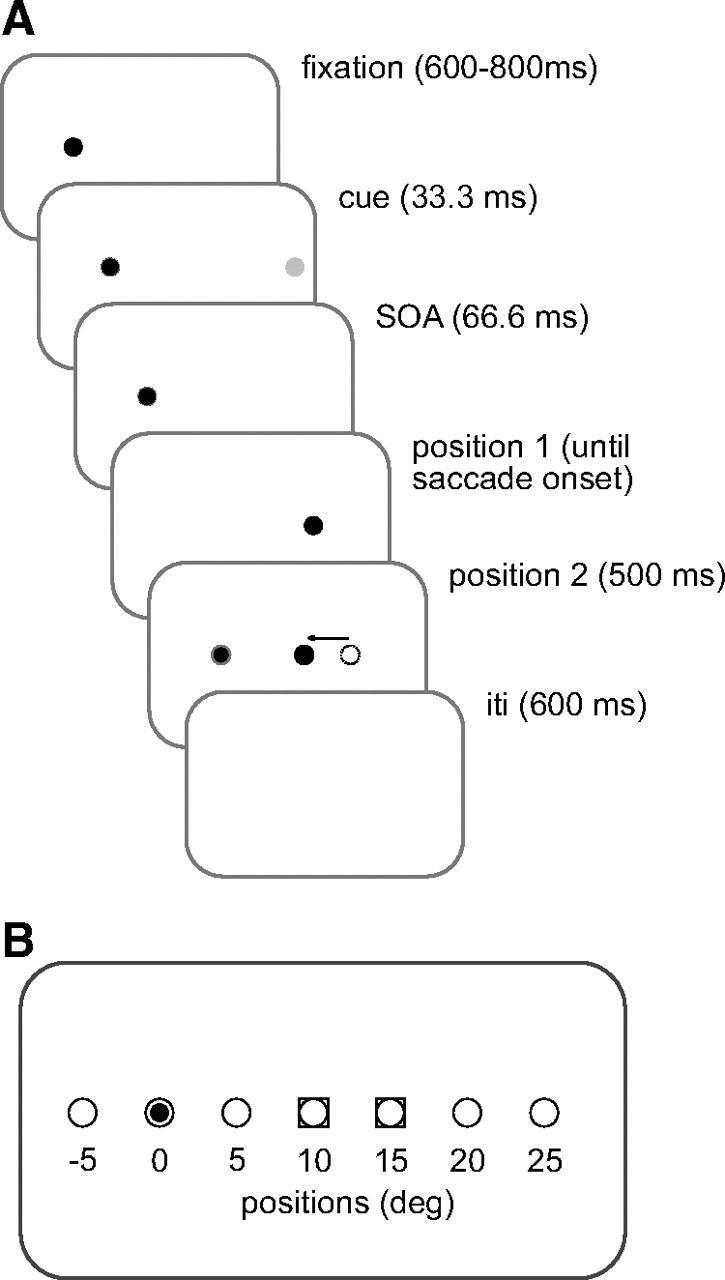Figure 1.

Task setup. A, Trial sequence for an adaptation trial. Each trial began when a fixation target appeared for a random time (600–800 ms, 36–48 frames in 6 frame intervals) (black filled circle). Next, a behaviorally irrelevant cue (light filled gray circle) was presented at one of 7 locations (see B) for 33.3 ms. Subjects were asked to ignore the presence of the cue. Following a SOA time of 66.67 ms, a target was presented at 15°, labeled as position 1 (darker gray circle). During the saccade, the position of the target shifted 5° backward (arrow) toward fixation (position 2, circle). The shortest saccade duration was 44 ms, and the target was always visible at its new location before the end of the saccade. The target then remained illuminated for 500 ms (30 frames). During control trials, the target was not shifted, i.e., position 1 and 2 were identical, either at 10° or at 15°. The intertrial interval (ITI) was 600 ms (36 frames). B, Locations of targets and cues. The possible positions of the cues (open circles) were 5° left of fixation (small black circle inside the open circle), at fixation (dimming of the fixation target), and 5°, 10°, 15°, 20° and 25° right of fixation. Target locations are shown as gray squares surrounding the open circles. Cues could appear randomly at one of 7 positions. In addition, there was a no-cue condition, which had the same timings.
